Are you planning to create an online store but struggling to pick the right platform? This article aims to provide a comprehensive comparison between SaaS vs. Open Source eCommerce so that you can make the perfect choice for your business.
With the immense advancement of technology, businesses have plenty of options to build their online stores. Two of the most popular methods are SaaS (Software as a Service) and Open Source eCommerce solutions. Both have their unique benefits and drawbacks, and the choice between them can significantly impact a business’s online presence.
SaaS eCommerce is a model where the software is hosted on a provider’s servers and accessed via the Internet. After paying a subscription fee you can use the software and the provider takes care of updates, security, and maintenance. This model allows you to set up an online store quickly and easily without having any prior experience or technical skills.
On the other hand, OpenSource eCommerce is a model where the source code of the software is available to the users. So, you can download, modify, and host the software on your server. While this model requires more technical skills, it offers a higher level of customization and control.
So, now the question is which platform you should use to build your online store.
Today, we’ll walk you through the complete overview of SaaS vs. open-source eCommerce so that you can make a profitable decision for your business.
Understanding SaaS eCommerce
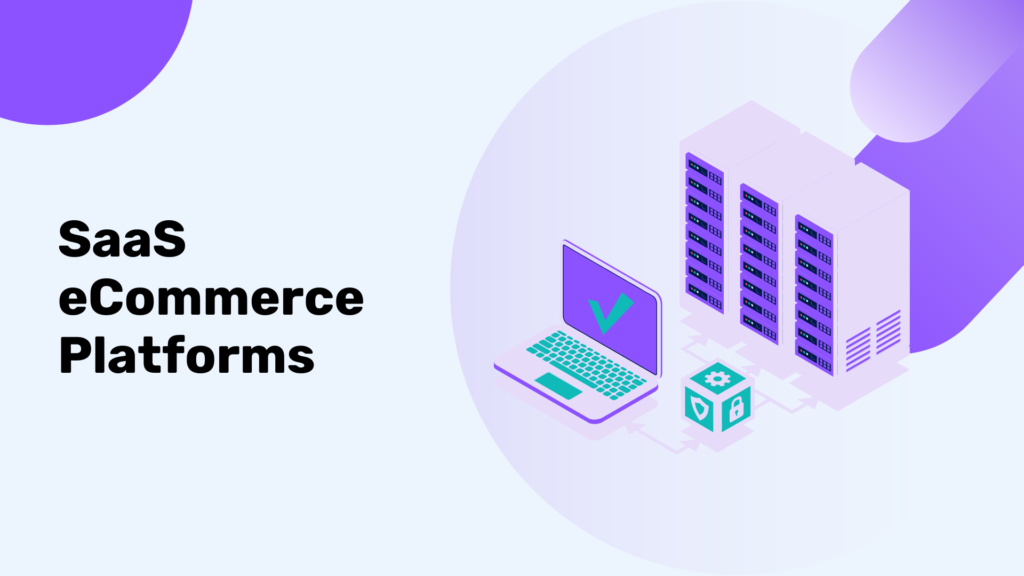
SaaS eCommerce is a cloud-based platform that provides businesses with all the tools they need to set up, manage, and scale their online stores.
SaaS platforms come with pre-built templates and drag-and-drop interfaces. Therefore, it would be easy to design a store that reflects your brand’s identity.
Some Popular Examples of SaaS eCommerce Platforms
1️⃣ Shopify: One of the most well-known SaaS eCommerce platforms. Shopify empowers a large number of businesses to establish their online stores. This platform supports a user-friendly interface and an extensive range of customizable themes and apps. It also offers robust features for inventory management, payment processing, order fulfillment, etc.
2️⃣ BigCommerce: Another top choice in the SaaS eCommerce arena, BigCommerce provides users with a comprehensive set of tools to build and scale their online businesses. BigCommerce offers you advanced SEO capabilities and flexible design options. So, your brand can reach a broader audience and drive more sales. Moreover, it has seamless integration with various marketplaces and social media channels.
3️⃣ Squarespace: A popular website builder and hosting platform. It enables individuals and businesses to create professional-looking websites using pre-built website templates and drag-and-drop elements. As a SaaS eCommerce platform, Squarespace handles the technical infrastructure, server maintenance, security updates, and ongoing platform improvements.
Are you ready to conquer the world of online business like a pro? Explore our eCommerce glossary of 80+ essential terms.
Advantages of SaaS eCommerce Platforms
One of the significant benefits of SaaS eCommerce is that it is a fully managed service. The SaaS provider handles all technical aspects, including server maintenance, software updates, and security. So you can focus on your core activities, such as product development and marketing.
Another advantage of SaaS eCommerce is its scalability. As the business grows, you can easily upgrade your subscription to accommodate more traffic and transactions. The provider’s servers are also designed to handle spikes in traffic.
So, the online store remains operational during peak shopping periods.
Disadvantages of SaaS eCommerce Platforms
While SaaS (Software as a Service) eCommerce platforms offer numerous benefits, there are also some disadvantages to consider.
Here are some common drawbacks associated with SaaS eCommerce platforms:
- Limited customization options compared to Open Source platforms
- Dependency on the provider for infrastructure, updates, and feature releases
- Concerns regarding data security and privacy
- Recurring costs can add up over time, especially with additional features or customization
- Vendor lock-in makes it challenging to switch platforms or migrate data.
It’s important to consider these factors alongside your business’s specific needs and requirements when making a decision.
Understanding OpenSource eCommerce

Open-source eCommerce refers to a platform where the source code is freely available. It allows businesses to modify, customize, and extend their online stores as per their unique needs.
Examples of Open Source eCommerce
1️⃣ WooCommerce: It is a popular platform for building online stores. WooCommerce has become a top choice for worldwide entrepreneurs due to its flexibility, integration with WordPress, and large user community. WooCommerce allows users to customize their online store according to their specific needs.
2️⃣ Magento: This popular platform offers a robust set of features and extensive customization options. It’s perfect for businesses looking to scale and expand their online presence.
3️⃣ OpenCart: It offers a user-friendly interface and a wide range of extensions to enhance your online store’s functionality. OpenCart offers robust features for product management, order processing, and payment integration.
4️⃣ PrestaShop: It is highly scalable to accommodate the growth of small to large online stores. Additionally, PrestaShop supports multiple languages, currencies, and tax systems. These exclusive features make this platform an ideal choice for businesses with a global customer base.
Read More: 8 Exclusive CMS Platforms to Start Your eCommerce Business Today.
Advantages of Open Source eCommerce Platforms
OpenSource eCommerce platforms offer a level of flexibility and customization unparalleled by SaaS solutions. Since the source code is available, businesses can tailor the software to meet their exact needs.
This includes modifying the store’s appearance, adding unique features, and integrating with other systems.
Another significant benefit of OpenSource eCommerce is its cost-effectiveness. Unlike SaaS solutions, there are no ongoing subscription fees. You only need to pay for the initial setup and any customization work.
However, it’s important to note that OpenSource eCommerce requires a higher level of technical expertise. However, the availability of helpful resources for popular platforms minimizes the hurdles a lot.
For example, it requires only a few clicks to build an online store in WordPress using WooCommerce. Moreover, you can find a rich library of plugins to extend the capabilities of your shop instantly.

Disadvantages of Open Source eCommerce Platforms
There are also some disadvantages to using open-source eCommerce platforms. Such as-
- Technical expertise is required for installation and customization
- Higher development and maintenance costs
- Time-consuming setup and customization process
- Lack of official support, relying on community resources
- Complexity in integrating with third-party systems
Please note that while these disadvantages exist, open-source eCommerce platforms also have numerous advantages. You can check them out above.
However, it’s important to weigh these factors against your specific business requirements and capabilities before making a decision.
SaaS vs Open Source eCommerce- Key Differences That You Should Know
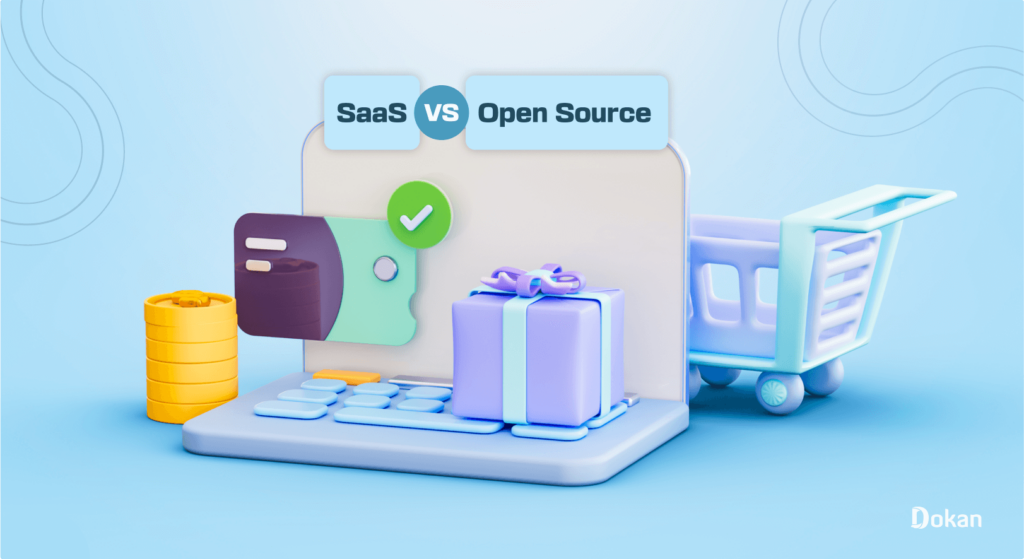
When it comes to eCommerce platforms, there are several key differences between SaaS and open-source solutions. Here are the key differences between them:
1. Ownership and Licensing
SaaS: With SaaS, you don’t own the software. You essentially rent it and access it through the internet. The software is managed and maintained by the SaaS provider, and you pay a subscription fee to use the platform.
Open Source: Open Source eCommerce platforms are freely available and can be downloaded, installed, and modified by anyone. You have complete ownership and control over the software. This type of system is typically licensed under open-source licenses such as GNU General Public License (GPL).
2. Customization and Flexibility
SaaS: SaaS platforms often provide limited customization options as they aim to serve a wide range of customers with a standardized solution. While some level of customization may be available, it’s typically limited to branding, design, and certain configuration options.
Open Source: Open Source eCommerce platforms provide extensive customization and flexibility. You have access to the source code. It allows you to modify and extend the platform to meet your specific requirements. You can add new features, integrate with other systems, and customize the user experience.
3. Maintenance and Updates
SaaS: SaaS providers handle maintenance, updates, and security patches for the platform. You don’t need to worry about infrastructure management or technical aspects. The provider takes care of server maintenance, backups, and system updates.
Open Source: With open source software, you are responsible for maintaining and updating the platform. This includes managing servers, applying updates, and ensuring security. While this gives you more control, it also requires technical expertise and resources.
4. Cost
SaaS: SaaS platforms typically involve a subscription-based pricing model. You pay a recurring fee based on usage, which can include factors such as the number of users, transactions, or features you need. The costs are predictable, and you don’t have to worry about upfront infrastructure expenses.
Open Source: Open Source platforms are free to download and use. However, you need to consider the costs associated with hosting, maintenance, development, and support. These costs can vary depending on your requirements and the resources you allocate.
5. Support and Community
SaaS: SaaS providers generally offer customer support as part of their service. You can reach out to their support team for assistance, bug fixes, or technical issues. However, the level of support can vary between providers.
Open Source: Open Source platforms often have a vibrant community of developers and users. You can find support through forums, documentation, and community-contributed resources. Additionally, some companies offer commercial support options for open-source platforms.
Here’s a table summarizing the differences between SaaS and Open Source eCommerce platforms:
| Aspect | SaaS eCommerce | Open Source eCommerce |
| Ownership and Licensing | Rent/subscription model | Full ownership |
| Customization | Limited | Extensive |
| Maintenance and Updates | Handled by provider | User’s responsibility |
| Cost | Recurring subscription fees | Free to download. Premium tools are available |
| Support and Community | Provider’s support | Community & optional paid support |
As you can see SaaS eCommerce platforms provide convenience, ease of use, and ongoing maintenance at the cost of customization options.
On the other hand, Open Source platforms offer greater flexibility, ownership, and customization capabilities but require more technical expertise and maintenance efforts.
The choice between them depends on your specific needs, budget, and technical capabilities.
Factors to Consider Before Choosing Between SaaS vs Open Source eCommerce
As you can see, these two eCommerce platforms have their advantages and disadvantages. There are thousands of profitable businesses are using SaaS platforms to sell their products or services. Similarly, a lot of people are running their online stores and making money online with different open-source platforms.
So, still, the question is the same- Which platform you should use to build your online store?
But I believe now you have enough data to analyze and match your needs with the features of distinct eCommerce platforms.
Let’s make your decision process easier. Here are the key factors you should consider before giving your stamp of approval on any of the platforms-
1. Hosting and Platform Ownership

For platform ownership, you should know about hosting services, security management, cost, etc.
With SaaS eCommerce, you are renting a platform for your online store. Here most of the things are operated by the SaaS provider such as updates, security, hosting, and other software management tasks.
The processing time is faster here. However, the lack of flexibility and customization can be a matter of concern.
With open-source platforms, you will be able to check and modify the source code. Such as WooCommerce, Magento, etc. It would be completely your responsibility to choose the web hosting for your online store. You should also take care of further integrations (with CRM, CMS, or ESP, for example) and deal with security issues.
Read More: 11 Things to Know Before Buying a Hosting Plan for Your Website.
2. Level of Customization
You need to decide how much control and modification you need for your online business.
As you know, SaaS platforms typically offer limited customization options. They aim to provide a standardized solution for a wide range of customers. While you can customize certain elements like branding, design, and content, the flexibility to modify the underlying code or functionality is often limited.
For example, Shopify is a popular SaaS eCommerce platform known for its user-friendly interface and pre-designed themes. You can customize the look and feel of your Shopify store using its theme editor and various apps. However, the level of customization is constrained by the platform’s predefined templates and features.
On the other hand, Open Source platforms provide extensive customization capabilities. It allows you to modify the platform according to your specific needs.
Since you have access to the source code it would be easier to add new features and integrate with external systems.
WooCommerce, for example, is an open-source eCommerce platform built as a plugin for WordPress. With WooCommerce, you have full control over the codebase. It enables you to customize every aspect of your online store. You can modify templates, develop custom functionality, and integrate with other WordPress plugins or external APIs.
3. Control Over SEO

Getting a higher rank on search engines for your online store as well as individual product pages is extremely important.
You should consider SEO as a crucial factor before choosing between SaaS vs. open-source eCommerce.
SaaS eCommerce platforms often come with built-in SEO tools and features. They usually offer built-in SEO features and optimization tools. You may easily optimize your meta tags, URL structure, and alt tags. However, the level of control over your website’s SEO can be limited.
It’s also essential to consider if the SaaS provider uses white hat SEO practices, which are ethical and align with search engine guidelines.
On the other hand, open-source eCommerce platforms give you complete control over your website’s SEO, including URL structure, meta tags, and content.
This can be beneficial for ranking on search engines. It also should be considered that you’re responsible for staying up-to-date with SEO best practices and making necessary changes.
4. Cost of Ownership
Estimate your budget and cost considerations. SaaS platforms typically involve subscription fees, which provide cost predictability but can accumulate over time.
Open Source platforms are generally free to download and use. But you should consider the costs associated with hosting, development, maintenance, and support.
5. Extended Integration Capabilities
Evaluate the integration capabilities you require for your eCommerce platform. SaaS platforms often provide pre-built integrations with popular services. Such as payment gateways, shipping providers, and other third-party tools.
Open Source platforms can be customized to integrate with specific systems, but it may require more development effort.
6. Scope of Scalability
Both options can offer scalability, but assessing how each platform accommodates your long-term goals and growth strategies is important.
SaaS platforms often have built-in scalability features. So, it is easier to handle increased traffic and expand your online store.
However, some open-source platforms can also be scaled effectively with the right infrastructure and optimizations. But it may require more technical knowledge and effort to ensure smooth scalability.
Choose SaaS with the limited arena of customization and share the responsibilities with the provider.
Choose open-source with complete control over your online store and take full responsibility.
Let’s concise all the discussion points and see-
Who Should Choose Saas eCommerce Platforms?
- Small to medium-sized businesses (SMBs) looking for quick and easy setup.
- Businesses with limited technical expertise or resources.
- Companies seeking cost predictability with fixed subscription fees.
- Startups or businesses aiming for rapid deployment.
- Industries such as fashion, beauty, and lifestyle where ready-to-use templates and designs are often suitable.
Who Should Choose Open Source eCommerce Platforms?
- Businesses require extensive customization and control over their eCommerce platform.
- Companies with technical expertise or access to developers.
- Businesses looking for cost savings in terms of software licenses.
- Industries with complex business processes and scalability needs.
- Enterprises with specific security and data control requirements.
SaaS vs. Open Source eCommerce: Stand Your Ground with The Right Choice
Choosing between SaaS and Open Source eCommerce is an important decision.
Ultimately, the choice between SaaS vs. Open Source eCommerce platforms depends on your specific requirements, technical expertise, and future goals.
Consider factors such as scalability, customization options, security and compliance, cost and pricing models, integration with third-party solutions, and support & maintenance when making your decision.
It’s crucial to evaluate the features of each platform. So you can align them with your business strategies and core objectives.
Also remember, having a long-term vision is crucial for making informed and successful decisions in business. Today you’re planning to build an online store. But tomorrow you can extend your opportunities by turning the single store into a versatile marketplace. Always keep the options open for expansion.
With the right eCommerce platform, you can take advantage of the growing online marketplace and grow your business to new heights.
Subscribe to
Dokan blog
We send weekly newsletters, no spam for sure!

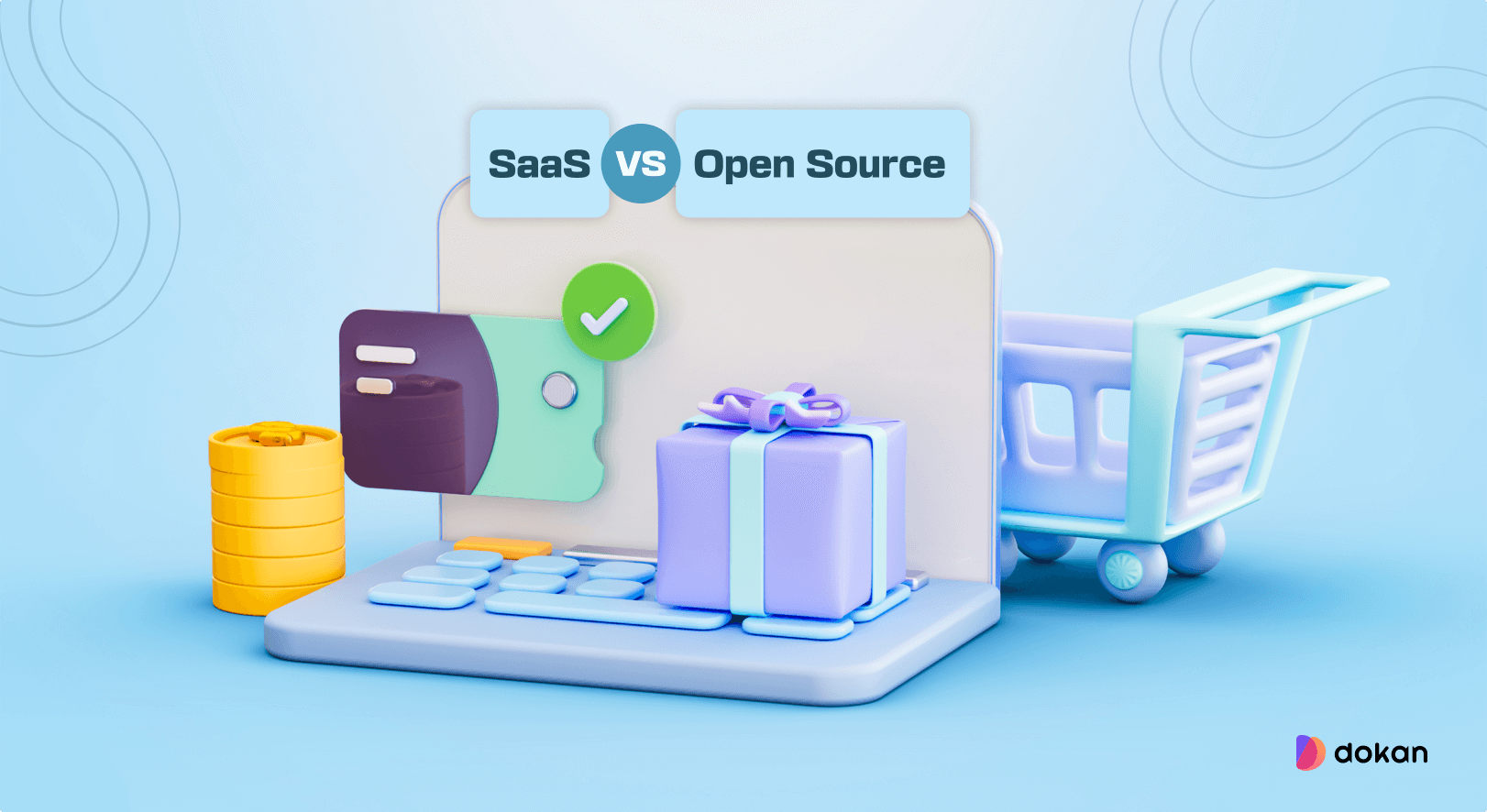

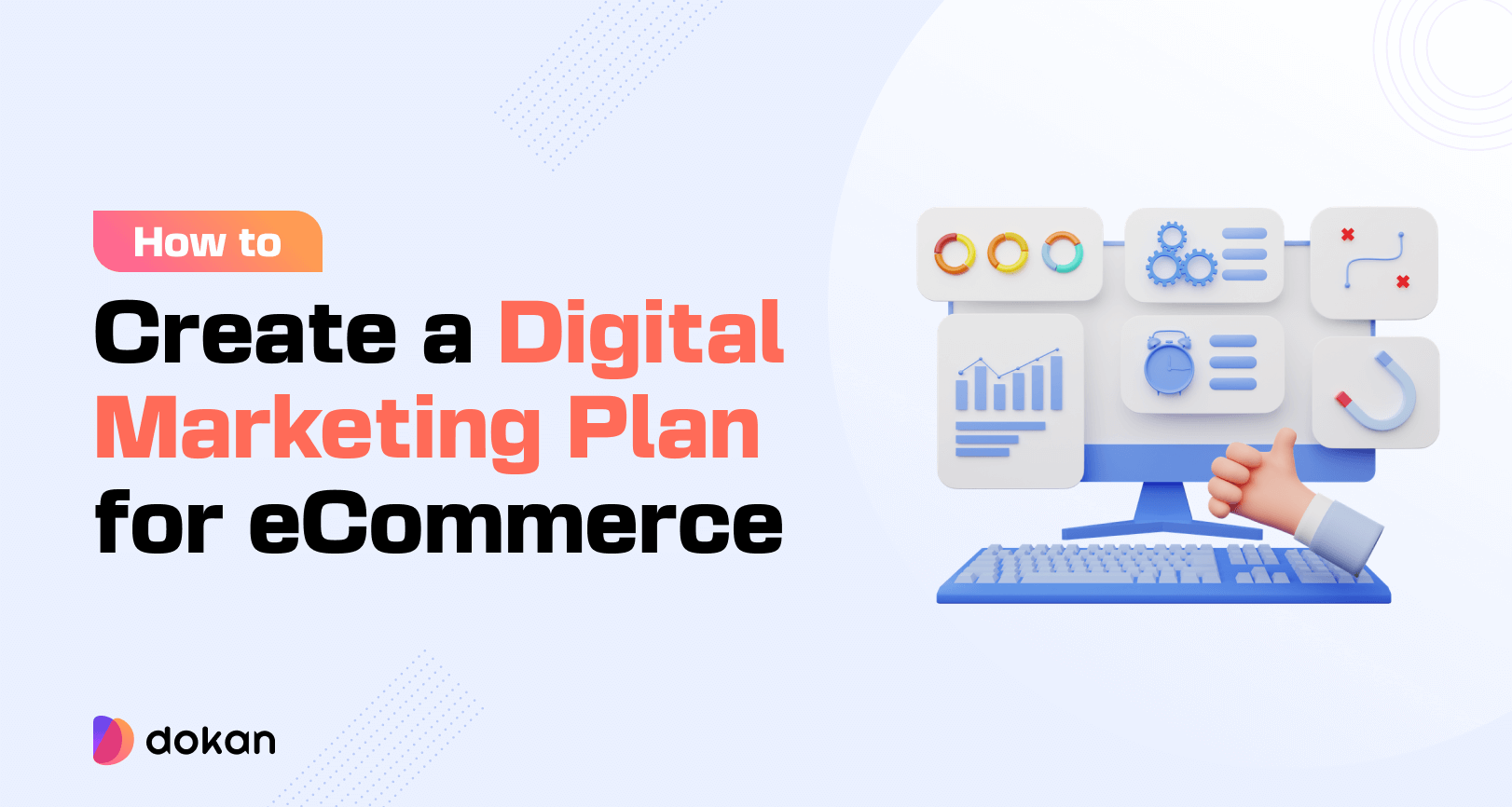

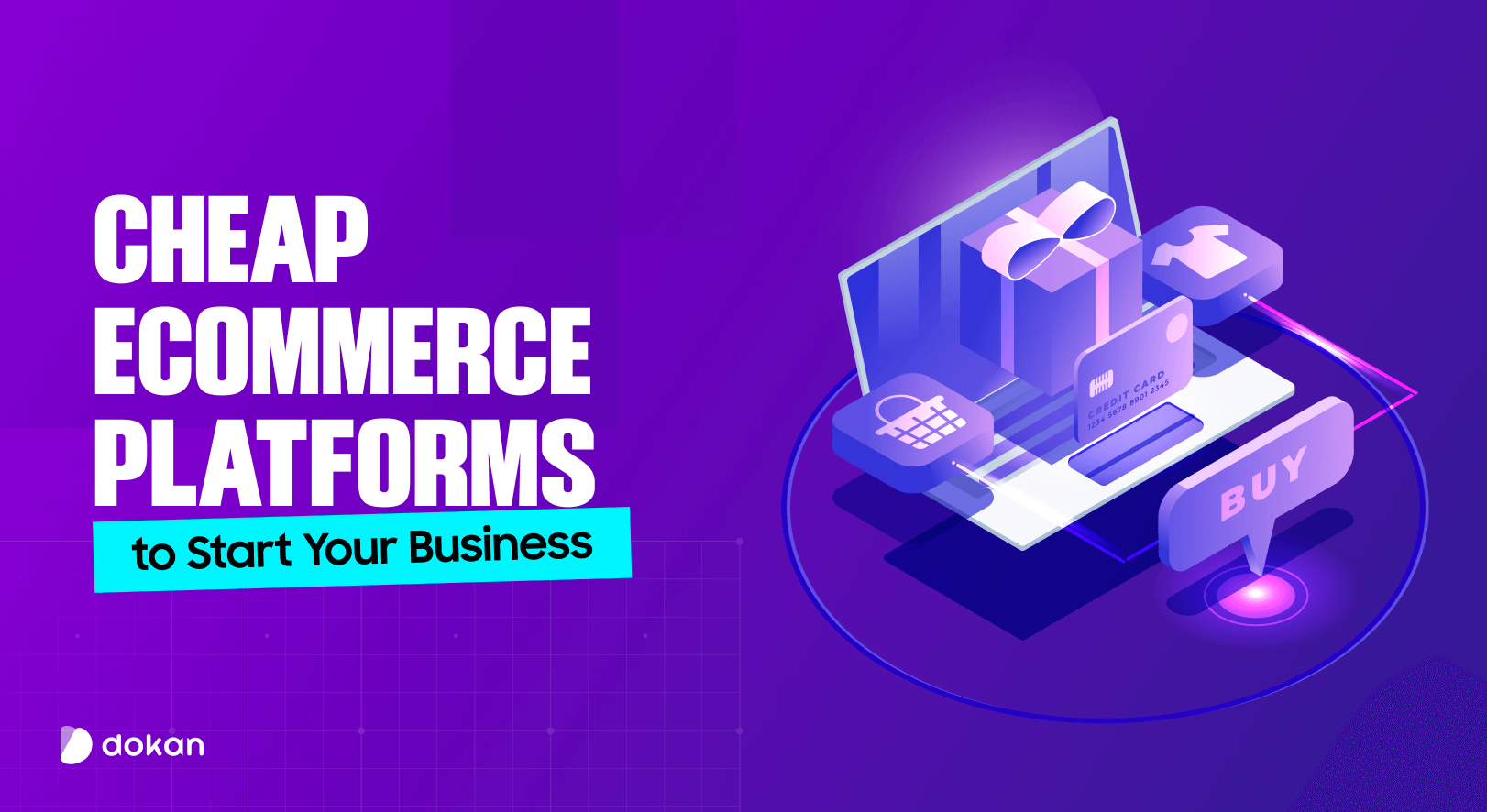

Leave a Reply